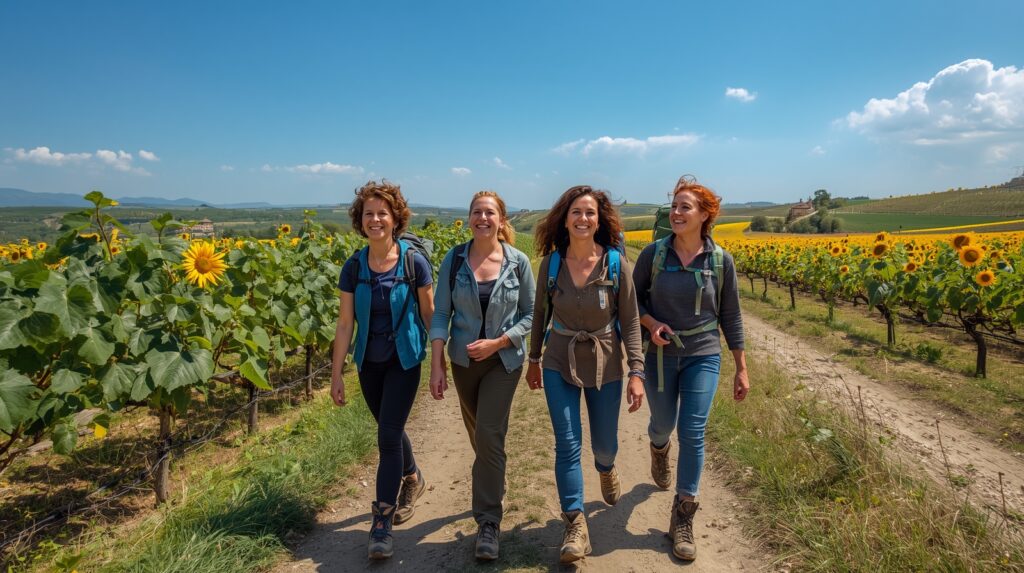Moving Forward When Everything’s Gone Sideways – one Conversation at a Time
Imagine this: You’re about to walk into a coffee shop to meet a friend after news that upended your world. You’re raw, defensive, maybe a touch desperate for reassurance. How you talk—and especially how you’re listened to—can make the difference between a from-bad-to-worse afternoon and the first hint of solid ground.
Every single one of us lives and dies by our conversations and connections.
This guide offers 15 eye-opening, evidence-backed ways to upgrade everyday conversations—even if you’re reeling from divorce, job loss, or unexpected illness. It’s packed with practical advice shaped by TED speaker Celeste Headlee and my own insights honed in life’s harshest classrooms.
Celeste Headlee’s TED talk is called “10 Ways to have Better Conversations” and I highly recommend it. It’s sharp, witty and spot-on. (See below)
This is for you if: Life has thrown you a curve-ball—divorce, loss, upheaval—or you’re staring down a major transition and need conversation strategies designed for people in crisis, not bots or boardrooms.
The Story: When One Conversation Changes Everything
Eva Moreau had nearly cancelled three times that morning. Her thumb hovered over Anne’s name in her contacts, the delete message already composed: Sorry, not feeling well. Rain check?
It would have been the fourth cancellation in two months.
Instead, she found herself standing outside Café des Augustins, watching raindrops chase each other down the fogged glass windows. Inside, she could see the warm amber glow of Edison bulbs, the blur of strangers laughing over tartines and bowls of café crème. The smell of roasting coffee beans mixed with wet pavement and the faint sweetness of pain au chocolat from the bakery next door. Her stomach turned—not from hunger, but from the familiar clench of dread that had become her constant companion.
Two weeks ago, the oncologist had used words like “aggressive” and “resistant” and “stage two.” Three months before that, Marc had moved his things out on a Tuesday morning while she was at work, leaving only a note on the kitchen counter and the ghost-smell of his aftershave lingering in the bathroom. And her job—the marketing director position she’d worked a decade to secure—had evaporated in a restructuring email that arrived the same week she’d found the lump.
Eva’s reflection stared back at her from the café window: a woman whose hair was already thinning from the first round of chemotherapy, hidden beneath a silk scarf she’d tied with shaking hands that morning. Her face looked hollowed out, like someone had taken an eraser to the person she used to be.
I should leave, she thought. Anne doesn’t need this. Nobody needs this.
But then the door opened, releasing a burst of warmth and the metallic jingle of the bell above the entrance. Anne stood there in her moss-green woollen coat, rain-spotted and slightly breathless, her cheeks flushed from the cold. Their eyes met.
“Eva.” Not a question. Just her name, spoken like a lifeline.
Anne didn’t rush forward with a crushing hug or a pitying smile. She simply held out her hand, and Eva took it, letting herself be guided to their usual corner table—the one by the window with the wrought-iron radiator that clanked and hissed like an old friend.
The café noise—the hiss of the espresso machine, the scrape of chair legs against tile, the murmur of French conversations—created a cocoon around them. Eva wrapped her fingers around the ceramic mug Anne had ordered for her: black tea, honey, no milk. Anne had remembered.
The heat from the mug seeped into Eva’s palms, but it couldn’t touch the cold that had settled in her chest weeks ago.
“How are you, really?” Anne asked. No preamble. No small talk about the weather or the upcoming holidays or the new restaurant down the street.
Eva opened her mouth to deliver the lie she’d perfected: Fine, managing, taking it one day at a time. But something in Anne’s steady gaze—patient, open, unhurried—unraveled her.
“I’m not,” she whispered. The words felt like stones dropping into deep water. “I’m not fine at all.”
Tears came before she could stop them, hot and shameful, spilling down her cheeks and onto the scarred wooden table. She waited for Anne to lean back, to offer a tissue with that apologetic expression people wore when confronted with raw grief. Instead, Anne leaned in. She reached across the table and placed her hand over Eva’s, her skin warm and solid and real.
“Tell me,” Anne said simply.
So Eva did.
She told Anne about the chemotherapy ward with its fluorescent lights and the woman two chairs down who hummed hymns under her breath during infusions. About waking at 3 AM in a tangle of sweat-soaked sheets, convinced she could feel the cancer spreading like dark water through her body. About the insurance forms she couldn’t bring herself to open, stacked in a pile on her kitchen counter next to dishes she hadn’t washed in days.
She told Anne about the ghost-marriage to Marc—how she still found herself setting two places at the table some mornings, how she’d called his number once at midnight just to hear his voicemail greeting. About the rage that bloomed in her chest when well-meaning friends said things like “everything happens for a reason” or “at least they caught it early.”
Anne didn’t flinch. She didn’t interrupt with her own divorce story or her mother’s battle with breast cancer or advice about positive thinking. She asked questions that cracked Eva open even further:
“What’s the hardest moment of your day?”
“When do you feel most alone?”
“What’s one thing—even something tiny—that’s brought you any comfort at all?”
The questions weren’t performative. Anne waited for real answers, her brown eyes steady, her thumb tracing small circles on the back of Eva’s hand. When Eva’s voice cracked and failed, Anne simply sat with her in the silence, holding space for the weight of everything Eva couldn’t name.
Outside, the rain intensified, drumming against the windows. The radiator clanked. Someone dropped a cup, and there was laughter, the sound of ceramic being swept away. Life continued in its ordinary chaos while Eva’s world felt suspended in this moment of being truly seen.
“I’m so angry,” Eva finally said, the words sharp and bitter on her tongue. “At Marc. At my body. At God, if there is one. I’m furious, and I’m exhausted, and I’m terrified I’m going to die alone in some hospital room and nobody will remember me because I never—” Her voice broke. “I never figured out who I was supposed to be.”
Anne squeezed her hand. Not the patronizing pat of someone trying to comfort, but the firm grip of someone holding on. “I hear you,” she said. And then, after a beat: “I’m not going anywhere.”
Something shifted. Not fixed—nothing was fixed. The cancer was still there. Marc was still gone. Her career was still ashes. But in that moment, with the rain creating a silver veil over Toulouse and the taste of honey-sweetened tea on her lips and Anne’s hand steady in hers, Eva felt the first hairline crack in the wall of isolation she’d built around herself.
They sat there for two hours. Anne didn’t offer solutions or silver linings. She didn’t tell Eva to stay positive or suggest alternative treatments she’d read about online. She just listened—deeply, fully, without agenda—and asked gentle questions that helped Eva untangle the knots in her chest.
When they finally stood to leave, Eva’s legs felt shaky but her breathing came easier. The café had grown crowded with the lunch rush, filled with the clatter of plates and the rich smell of cassoulet. Anne helped Eva with her coat, a small gesture that felt enormous.
At the door, Anne hugged her—not the brief, obligatory embrace of social convention, but a real hug, the kind where you feel another person’s heartbeat against your own.
“Same time next week?” Anne asked.
Eva nodded. “Same time next week.”
Walking home through the rain-washed streets, Eva realised she wasn’t lighter. The burdens were still there, heavy and real. But she was no longer carrying them alone. That single conversation hadn’t cured anything, but it had created something more precious: a witnessing. Someone had held space for her pain without trying to diminish it, fix it, or turn it into a lesson.
It was, Eva thought, the first real breath she’d taken in months.
And then the next one.
Conversation Can Be a Catalyst for Change
The right conversation can turn the dial from despair to hope. Whether you’re at the edge of a messy divorce or frostbitten by a professional setback, “better” conversations aren’t just a social nicety—they’re a lifeline.
Conversations aren’t just about problem-solving—they’re about rebuilding the emotional scaffolding we need to grow. They shape identity, foster trust, and establish new possibilities, especially for those battered by crisis.
Clarity in communication helps people grasp the bigger picture, see fresh options, and feel genuinely understood—a building block for lasting change.
20 Ways to Have a Better Conversation
Celeste Headlee’s Suggestions:
1. Be present
Don’t multitask. Give the gift of full attention. Put down your phone, close your laptop, and truly show up for the person in front of you.
2. Don’t pontificate
Avoid the preacher’s pulpit. Invite others in. Set aside your opinions and enter every conversation assuming you have something to learn.
3. If you don’t know, say so
Honesty invites honesty. There’s power in admitting uncertainty rather than bluffing your way through.
4. Ask open-ended questions
Use “how,” “what,” and “why” to dig deeper. Instead of “Did that upset you?” try “How did that make you feel?”
5. Go with the flow
If your mind drifts, let thoughts float out again without hijacking the moment. Stay anchored to what’s being said right now.
6. Listen—fully, deeply, and with curiosity
Listening is perhaps the most important skill of all. Listen with the intent to understand, not to respond.
7. Don’t equate your experience with theirs
It’s not about you; hold their story with respect. Every experience is unique—resist the urge to say “that happened to me too.”
8. Avoid repeating yourself
Once is enough; trust others to hear you the first time. Repetition suggests you don’t think they’re listening.
9. Stay out of the weeds
Details are good, but don’t drown people in them. Names, dates, and minor specifics can bog down the emotional truth you’re trying to share.
10. Be brief
Clarity beats verbosity; aim for substance over length. As Celeste Headley says, “A good conversation is like a miniskirt; short enough to retain interest, but long enough to cover the subject.”
My Additions:
11. Use empathy intentionally
Imagine, for a moment, what it’s like in their shoes. Empathy isn’t just feeling sorry for someone—it’s understanding their perspective.
12. Embrace awkward silences
They open space for real connection. Don’t rush to fill every pause. Silence can be where the most honest thoughts emerge.
13. Follow up thoughtfully
After a meaningful talk, send a brief message or note. “I’ve been thinking about what you shared” can mean the world.
14. Share vulnerabilities selectively
Be real, but don’t overshare; boundaries matter. Vulnerability builds connection, but it should serve the conversation, not dominate it.
15. Celebrate tiny progress
Acknowledge each step someone takes toward openness. “Thank you for sharing that” validates courage and encourages further honesty.
FAQ: Better Conversations during Majot Life Changes
How do I start a tough conversation when I feel overwhelmed?
Begin with vulnerability, not solutions. Name your emotions (“I’m feeling lost”). Open-ended questions can invite dialogue.
What if the person I’m speaking to isn’t receptive?
Stay respectful and brief. If needed, pause and revisit later. Not every conversation succeeds the first time.
How do I avoid hijacking the discussion with my own story?
Practice reflective listening—acknowledge their experience before sharing yours, and keep comparisons minimal.
How do I build trust quickly in a new group or community?
Listen attentively, show empathy, and follow up with gratitude. Transparency and kindness accelerate trust-building.
How does mindful conversation help stress?
It shifts focus from anxiety to connection, lowers emotional “noise,” and invites the brain to settle—a proven stress-relief mechanism.
Recommended Reading
- “Difficult Conversations” by Douglas Stone, Bruce Patton, Sheila Heen — A classic for navigating personal and professional conflict; lucid, practical, and rooted in research.
- “Crucial Conversations” by Kerry Patterson, Joseph Grenny et al. — Step-by-step tools for talking when stakes are high.
- “Nonviolent Communication” by Marshall Rosenberg — Essential for anyone seeking to build empathy and resolve misunderstandings.
PS: For everyday micro-reflections, check out ‘Embracing Change – in 10 minutes a day’—built for survivors, rebuilders, and all who crave clarity and comfort.
Start Your Next Chapter—One Conversation at a Time
“The quality of your life is in direct proportion to the quality of your conversations.” Each talk, no matter how brief, is a chance to invite hope, restore equilibrium, and start anew.
Ready for a soul-reset? Join one of my Camino de Santiago Crossroads Retreats in the south-west of France. Here, ancient walking routes merge with mindful meditation, and stories unfold beside the gentle presence of Friesian horses. Every day offers guided exercises in stress management, gratitude, and clarity—designed for individuals moving through divorce, loss, illness, or simply those seeking new purpose.
Guests leave not just refreshed, but transformed—armed with practical tools for resilience, self-care, and trust in their own voice. With over 30 guest testimonials, eight non-fiction books, and fifteen years hosting at the retreat’s heart, your retreat host brings world-class expertise, warmth, and a gentle dose of humour to each journey.









Stress destroys Lives. To find out what you can do to safeguard your sanity by taking my insight-giving quiz, subscribe to my mailing list.

“I am an experienced medical doctor – MBChB, MRCGP, NLP master pract cert, Transformational Life Coach (dip.) Life Story Coach (cert.) Stress Counselling (cert.) Med Hypnotherapy (dip.) and EAGALA (cert.) I may have an impressive number of letters after my name, and more than three decades of professional experience, but what qualifies me to excel at what I do is my intuitive understanding of my clients’ difficulties and my extensive personal experience of managing major life changes using strategies I developed over many years.” Dr M Montagu

